Huawei has been making consistently great phones for a number of years now, yet has struggled to establish itself as a household name in western markets – and its latest flagship, the Huawei P10, offers a glimpse as to why that’s the case.
he Huawei P10 is a culmination of everything the company has been doing right, with a few minor tweaks from the P9 to make sure it keeps up with the big guns such as Apple and Samsung.
But they are minor tweaks, and the P10 is a limited upgrade – and if you're already running a recent phone from the company you may not be inspired to upgrade, although you might want to check out the slightly larger and better-specced Huawei P10 Plus instead.
Huawei P10 price and release date
- Not coming to the US, but may launch in Australia
- UK release confirmed, but pricing and availability are currently unavailable
- Early signs suggest it'll be more expensive than the Huawei P9 was at launch
An exact UK release date for the P10 hasn't been provided by Huawei just yet, though it's expected to arrive in March.
We don't have a definite price either but the price in euros has been confirmed at €649, which converts to around £550.
We don't have word of pricing or availability for Australia, but we'd hope the phone would come to that market considering the Huawei P9 was available there.
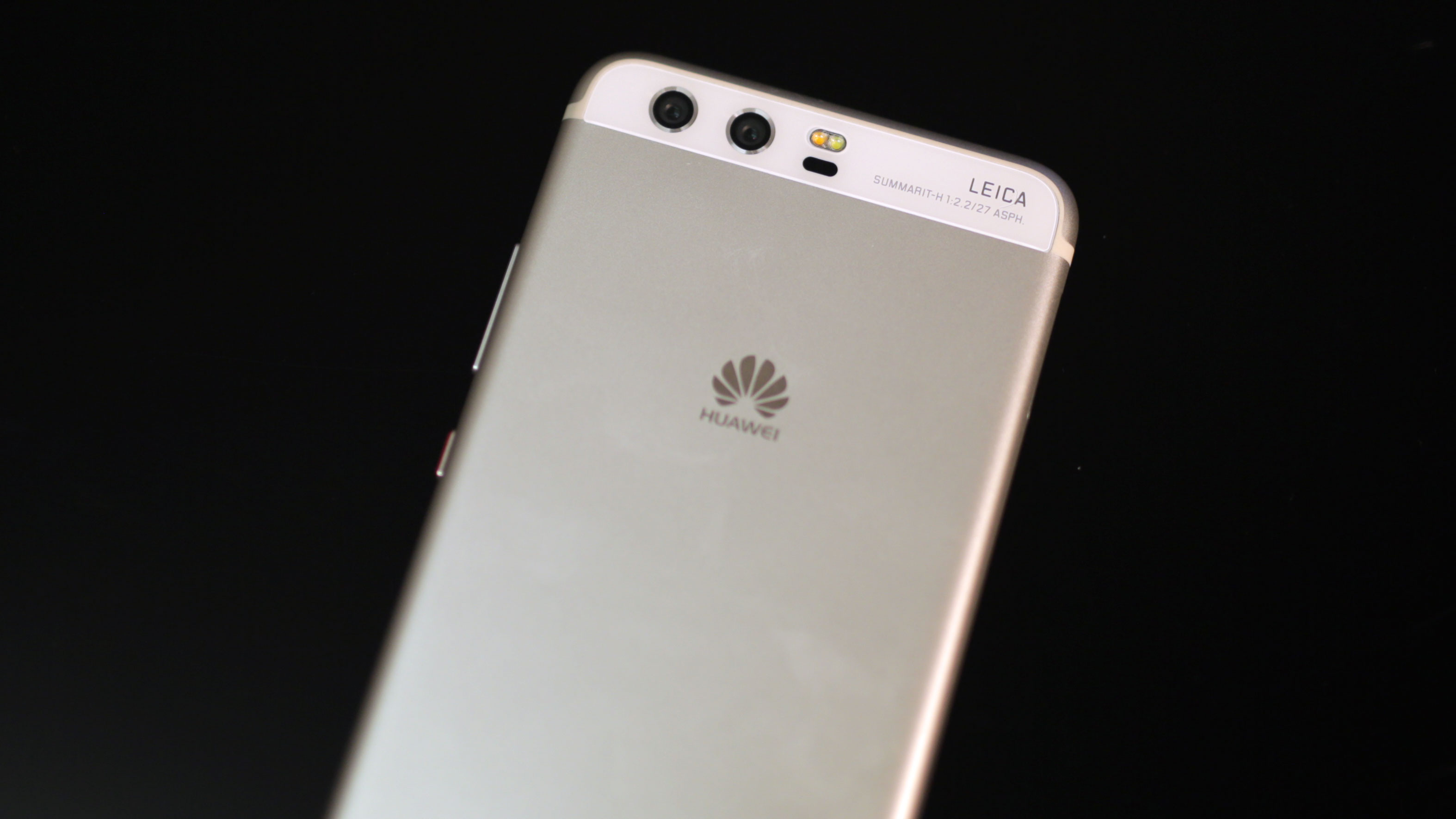
You won't be able to buy this phone in the US, however, and it's not currently clear why the company isn't launching the P10 there. If you're in the US you may want to seek out an imported model, as we expect it to work with AT&T and T-Mobile, but it probably won't work with Verizon and Sprint.
As for price, that’s not certain yet either. The Huawei P9 launched at £449.99 (about $470, AU$799), a touch below most other major phone brands.
The Huawei Mate 9 phablet, which launched at the tail end of 2016, jumped up in price compared to the Mate 8 though, so it may be that Huawei decides to drastically up the price for the P10 too.
Key features
- New fingerprint scanner offers a new way to navigate your phone
- Improved camera system includes a portrait mode
The fingerprint scanner on the Huawei P10 is a big highlight of this phone. This is the first time Huawei has put its security scanner on the front of the phone for a few iterations. It sits just below the screen, although despite it looking like the home key on a Samsung device you can’t press this down, as it’s not a button. There are no capacitive keys on the front of the phone either; instead navigation between screens and apps is all controlled through the fingerprint sensor.
Huawei says this is to try and create a more streamlined design – something it calls 'organic minimalism'.
To move around the interface you’ll need to push down on the fingerprint sensor for around a second, but to go back one step you’ll just tap it quickly. You can also swipe to the right to open the previous apps screen.
When you first pick up the P10 and try to use this, it feels convoluted. After a week of use, we found it became much easier to understand, and actually a little faster than moving between three different keys at the bottom of your phone, as on other devices.
Just be warned, you’ll likely spend your first few days getting frustrated, as you’ve tapped the button to go to your home screen but instead find yourself returning to a web page.
As with its other phones Huawei is putting a big focus on the camera for the P10. There’s a dual camera setup on the rear of the P10 – that’s a 20MP monochrome sensor working in tandem with a 12MP color shooter.
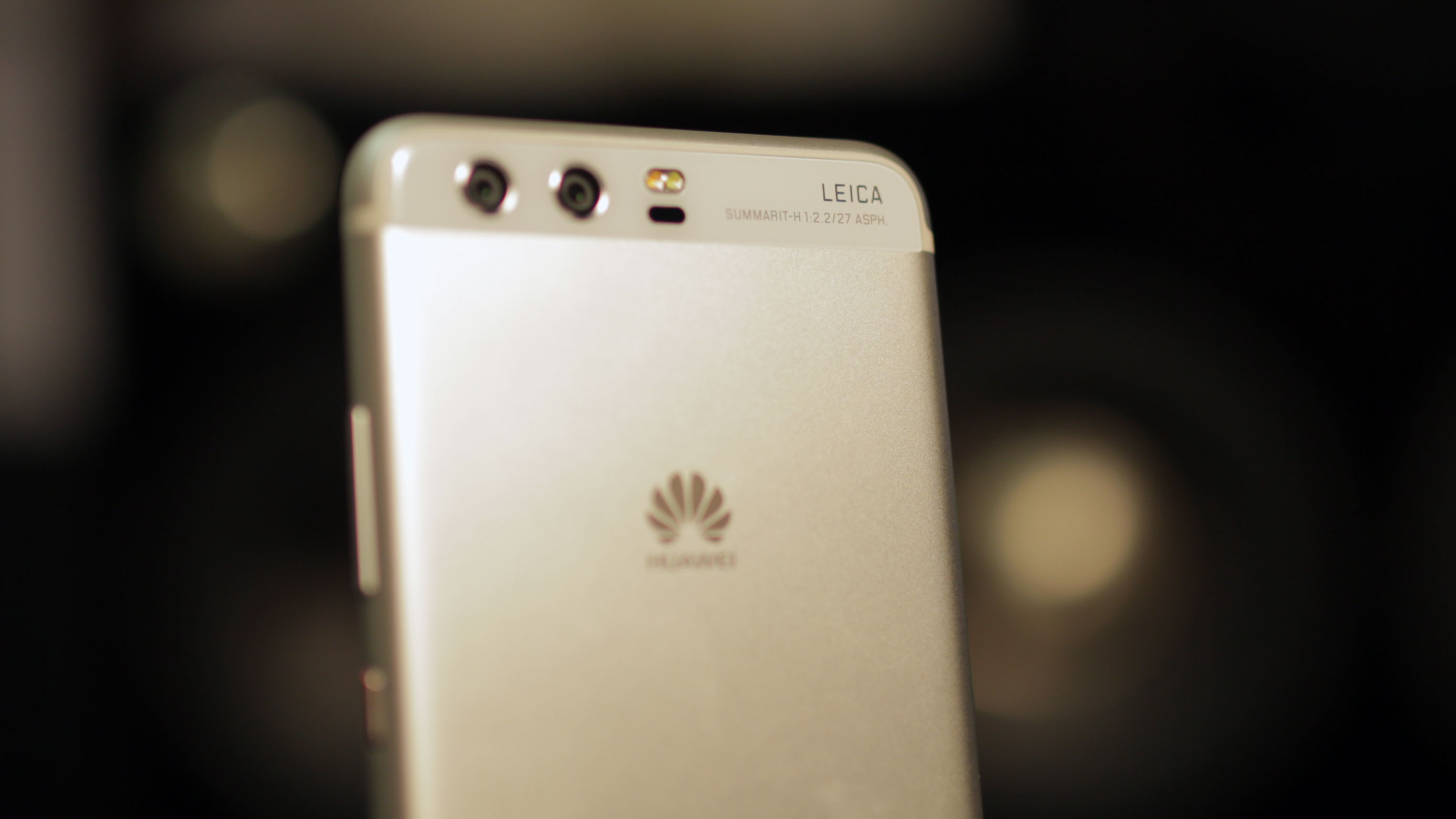
Images are taken on both cameras and the phone combines both – the black and white sensor is claimed to improve detail in the image, while the 12MP sensor captures the color. We’ve found that in good lighting the P10’s camera is better than the P9’s, but it’s not doing anything remarkably different.
There’s also a new Leica-branded Portrait mode, which improves facial tracking and includes a beautification mode – we’ll tell you more about this in the upcoming camera section.
Design
- More rounded design makes the Huawei P10 look like an iPhone 6S
- Easier to handle than some other Huawei devices
- Fingerprint scanner on the front changes the way you hold the phone
The Huawei P10 looks like an iPhone 6S – there’s no escaping that. It’s striking how similar the design of the P10 is to the iPhone 6S, enough so that we’ve had many people mistake the device for an iPhone.
If you’re a fan of the iPhone design but not Apple’s iOS, the Huawei P10 could well be a great buy for you.
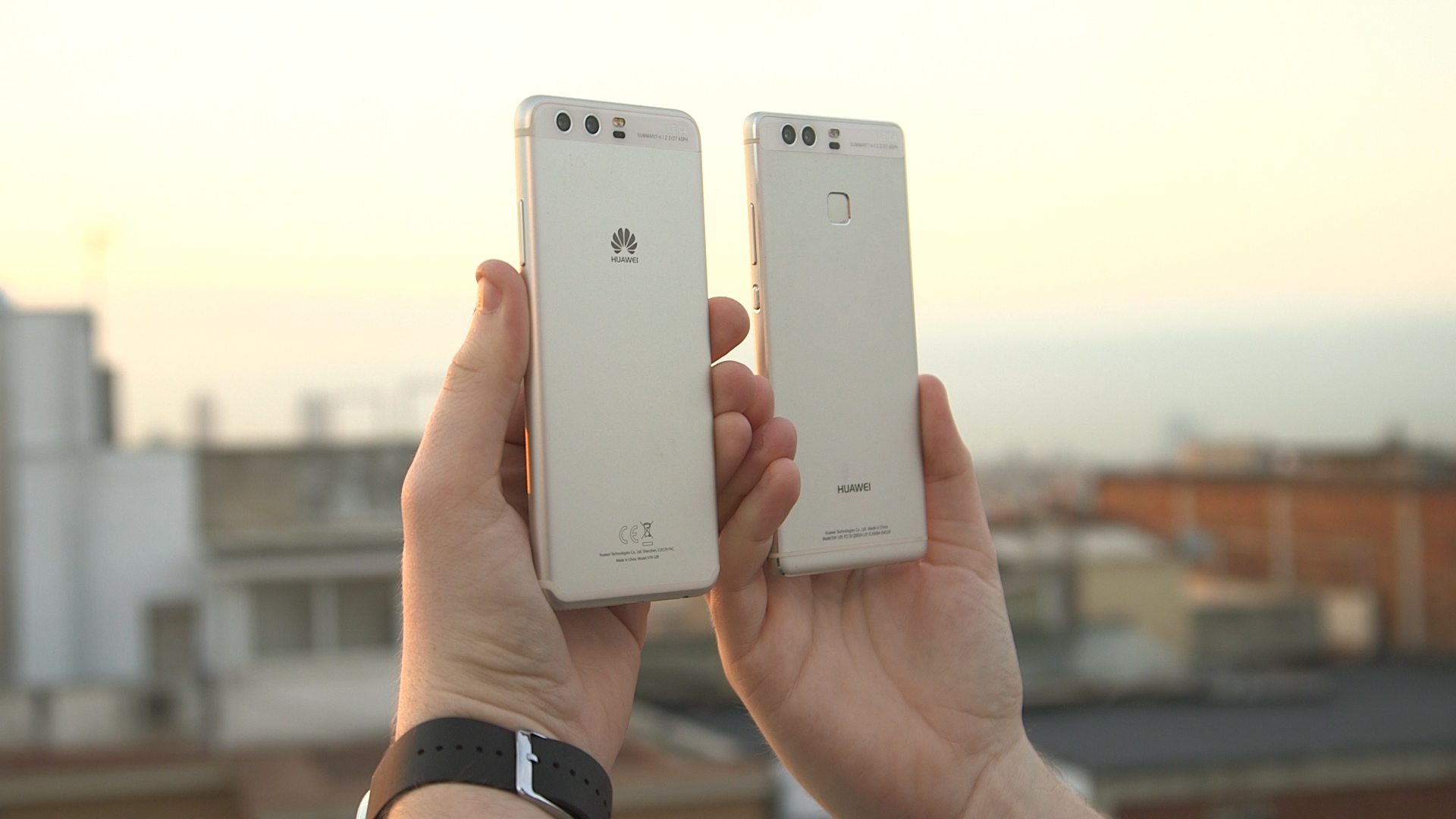
Despite looking like Apple’s device, much of the design language on the P10 is also similar to the Huawei P9. It’s a slightly more comfortable phone to use than that phone, thanks to rounded corners that make it a touch more comfortable in the hand.
The power button is slightly indented, on the right-hand side of the phone, and feels different enough to the volume rocker that you won’t confuse the two when the phone’s in your pocket.

Along the bottom edge of the phone sit the single speaker driver, the USB-C port and the 3.5mm headphone jack. Huawei is keeping the manual headphone jack for now, unlike some of the competition, so you’ll be able to continue using wired headphones with this phone.
The back of the phone is a full-metal unibody once again, but this time there are a few different effects to choose from.

Huawei has added two 'dazzling' color options to the range for the Huawei P10, which give a reflective metal effect and look great.
The technology behind this is called 'Hyper Diamond Cut'; it means you won’t leave any fingerprints on the back of the phone, and it will also look beautiful from afar.
The phone pictured throughout this review doesn't sport the 'Hyper Diamond Cut' finish, unfortunately. The regular metal Huawei P10 looks a little boring compared to the new dazzling version, but it does come in five color options.
These are black, green, silver, gold and rose gold. Huawei is also included a White Ceramic version, which is still made of metal but comes with a ceramic-effect finish on top.
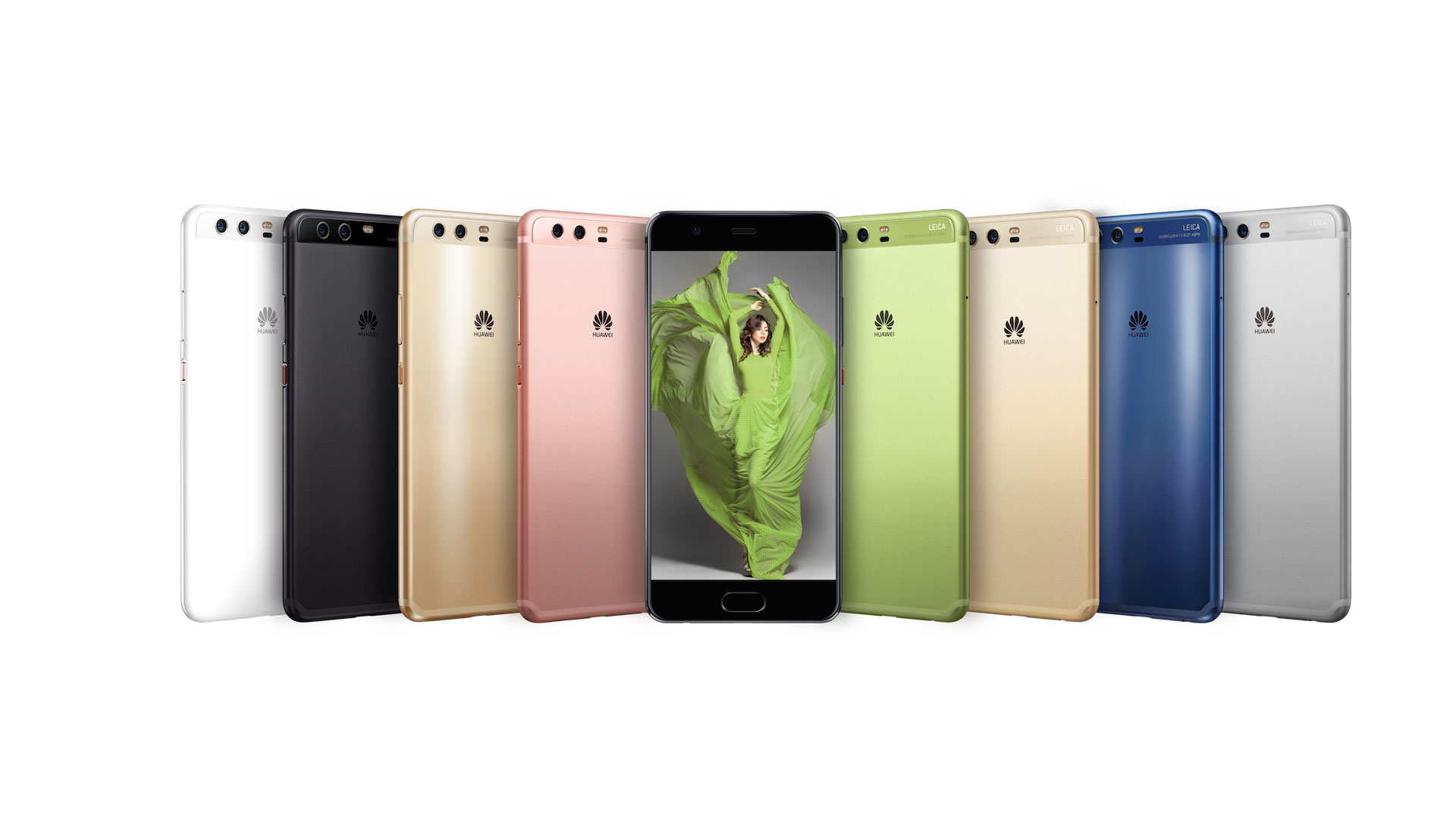
If you’re upgrading to the Huawei P10 we certainly think you’ll be taken with either the Dazzling Blue or Dazzling Gold options, as each looks quite different to anything else you can buy right now.
While we’re not reviewing either of the ‘Dazzling’ options, but we have had the chance to hold them and they look and feel very nice indeed.
The design of the Huawei P10 does feel a little slicker than previous Huawei phones, and a better overall package. It’s easy to hold this device – the Huawei Mate 9 can be unwieldy for some.
But we’ll say it again… it’s really hard to shake the impression that this phone looks very like an iPhone.
Display
- Full HD 5.1-inch display that's bright and colorful
- Looking for a higher resolution? Go for the P10 Plus
Huawei has opted for a Full HD display on the P10, unlike competition from LG and Samsung that have QHD panels. And just a day after the P10 was announced, Sony showed off its brand new 4K panel phone, which offers a far better resolution than the P10.
Why Huawei has decided not to update the panel isn’t totally clear – we don’t think it’s a particularly bad thing, but if you do want a higher resolution you’ll want to buy the Huawei P10 Plus, which features a QHD resolution panel.

The screen is much the same as we saw on the Huawei P9, which we were mostly pretty happy with. It’s a touch smaller at 5.1 inches - the Huawei P9 was 5.2 inches.
You’ll be able to reach all corners of the display without stretching out your fingers. You may sometimes have to use both hands to use a particular feature, but it’s a comfortable experience.

The panel itself offers 432 pixels per inch, which means everything you watch on here looks sharp, despite it not being a QHD panel. We also found the display to be super-bright, which is great if you’re often using your phone in strong sunlight.
Interface and reliability
- Comes with the latest Android 7 software onboard
- Huawei also includes its Emotion UI 5.1 overlay
- No Google Daydream support and Google Assistant isn't here yet either
The Huawei P10 comes packing the latest software from Google – that’s Android 7 Nougat – but Huawei has stuck its Emotion UI 5.1 software on top to give the OS a different look and offer up a variety of additional features.
Emotion UI hasn’t always been popular in the West, but some major changes have been made over the past few years which have made it look quite different, so it might be worth another look.
One of our biggest complaints about the Emotion UI look was the lack of an app drawer, but you can now have that feature if you want it.

By default all your apps will be spread over your home screens, much like on iOS, but you can now opt to have an app drawer in the settings, which is a big help if you want to be able to organize your screens.
It does still feel like there are a lot of apps on the Huawei P10 that you won’t use, such as Huawei’s HiCare and HiGame services. Plus there’s also a Compass app, which is largely useless if you’re not into orienteering. But these are mostly filed away in different folders, and there are no extra apps or games that will get in the way when you first start the phone up.
Our biggest problem with the software on the P10 is there’s no sign of Google Assistant or Google Daydream. These are two of the best features in the latest version of Android, but it seems Huawei has no intention of including them on the P10.

Daydream won’t be compatible with the Huawei P10 – so if you buy this phone you won’t be able to experience VR in the same way as you could on the Google Pixel or ZTE Axon 7.
Google Assistant’s may one day come to the Huawei P10, but this isn’t certain. Huawei has confirmed to TechRadar that it’s still in talks with Google over whether the voice-activated assistant will make its way to the P10, and it’ll be a major shame if it never turns up.
Music, movies and gaming
- Lots of apps pre-installed to help you consume media
- Speaker, headphone jack and Bluetooth for listening to music
- A whole 64GB of storage to fill up with apps and media
The Huawei P10 should suit most people nicely for watching movies, listening to music or playing games.
Huawei has included a dedicated Music app for playing audio files you upload directly to the phone, plus there’s Google Play Music already installed on the device. We found ourselves downloading other streaming apps such as Spotify and podcast launchers, though, to get a full audio experience.

Bluetooth headphones connect easily to the P10, and during our time using the phone we had perfect audio over the connection.
There’s also a 3.5mm headphone jack on the bottom of the phone, so you can use wired headphones too – and if you like you’re headphones wired that’s a definite upside to buying the P10, with manufacturers such as Apple, HTC and Motorola dropping that feature on recent handsets.
The 5.1-inch Full HD display is great for watching movies and videos, and the phone’s size means it’s easy to hold while viewing, although you may want a slightly bigger screen if you’re going to be watching a lot of video – the P10 Plus and its 5.5-inch QHD resolution display may suit you better.

There’s a Videos app included on the P10 for playing video files you’ve put on your phone, while you can also use YouTube or Google Play Movies and TV to watch content.
The Huawei P10 comes with 64GB of storage onboard, and supports microSD cards up to 256GB if you need more than that. When you boot the phone up you’ll find 11.5GB already used for the included software, but you should still have more than enough room for a couple of movies as well as all your apps and games.

Gaming on the Huawei P10 is also an enjoyable experience. We found it the perfect size to hold when commuting, although it can be a little difficult to see text within games if you’re used to having a larger phone.
There’s a powerful processor and a lot of RAM behind the P10 that will mean gaming performance keeps pace with other recent flagship devices.
There are better devices out there for hardcore phone-gamers, but we played a lot of demanding games on the Huawei P10, and everything ran smoothly.
Benchmarks and performance
- Poorer benchmarking performance than the Huawei P9
- Still works exactly how you'd like it to though offering a slick experience
Huawei has included its own HiSilicon Kirin 960 chipset inside the Huawei P10, the same processor we saw in the Huawei Mate 9.
Here it’s paired with 4GB of RAM, and this combo will easily run all the latest apps and games you’ll want to be using. During our time with the phone we were never particularly disappointed with its performance, with everything loading quickly and no app crashes.
Watch the video below to see how the Huawei P10 compares to the Huawei P9 in terms of speed...
However, if you really push the performance envelope – by playing graphically demanding games for example, you’ll find the P10 is capable of handling it but it won’t be as snappy as processors inside the Samsung Galaxy S7 Edge for example.
When we ran our benchmarking test on the Huawei P10 the results were actually a little disappointing – in fact the P10 returned a dramatically lower score than the Huawei P9.

The P10 turned in an average multi-core score of 5888, while last year’s Huawei P9 scored 6300. The P10 didn’t do that much better than the Mate 9, which came in at a lowly 5815.
Considering the Galaxy S7 Edge scored 6542 and the Huawei P9 wasn’t far behind, the Huawei P10 hasn’t done particularly well in the raw numbers.
In day to day use, though, we found the Huawei P10 performed perfectly well, so you shouldn’t be too worried if you’re just looking for a phone that can handle everyday tasks such as social media or running a game of Pokemon Go.
Battery life
- Not the best battery life available on the market
- When playing video it performed slightly worse than the Huawei P9
- Will last you a full day on limited to medium usage
Battery life on the Huawei P10 has been improved compared to various older Huawei devices, but it’s still not great.
We regularly found the phone had died in our pockets towards the end of the day. That said, we were pushing the P10 hard, and if you’re a lighter user you’ll probably be okay until you put the phone on charge overnight
An hour-long commute, listening to audio over Bluetooth and doing a spot of web browsing now and then brought the battery down by 15%.
The Huawei P10 has pretty impressive idle battery life, mind you – we just found that it struggled when we put it through hard processing tasks, or left the screen on for extended periods.

Huawei has upgraded the cell in the P10 to 3,200mAh compared to the 3,000mAh unit in the P9, but it seems that hasn’t helped much.
In the course of our video test,– where we play a 90-minute video clip from the phone’s memory at full brightness, with connectivity options on, the Huawei P10 lost 20% of its battery.
In the same test the Huawei P9 only lost 85%, so for playing video this phone is actually worse than the P9. The Samsung Galaxy S7 Edge is the phone to go for in terms of battery endurance for watching video, as it only lost 13% in the same test.
Considering there isn’t an obvious battery drain on the P10 compared to the P9, it’s a real disappointment that the battery life seems to be worse on the newer device. If you’re looking for a phone with great battery life, Huawei’s flagship phones probably aren’t where you’ll find it.
To charge the phone you’ll be using the USB-C port at the bottom of the phone, and there’s fast-charging here too.
We didn’t get the opportunity to try fast-charging with our review handset, as the required charger wasn’t included in the box. But if you buy the Huawei P10 the correct charger should be included.
There’s no wireless charging on the Huawei P10, however, which is a notable omission when many phone manufacturers are currently starting to adopt the technology.
Camera
- Dual camera setup - 12MP RGB sensor working alongside 20MP monochrome shooter
- New Lecia Portrait mode combines previously seen beauty mode and Bokeh effects into an easier to use package
The Huawei P9 saw the debut of the Leica-branded dual-lens camera, and it’s back for the P10.
The setup here, however, is almost the same as that on the Huawei Mate 9, with a 12MP color sensor working in tandem with a 20MP monochrome one.
The phone takes a photo using both sensors, then combines the two images, the idea being that the black and white sensor will enhance detail and contrast in the color image.
The big improvement over both the Mate 9 and Huawei P9 is a wider and therefore faster maximum aperture on the camera setup – it’s f/1.8 here, which means you’ll get brighter photos at a given shutter speed.

When you’re shooting in good lighting, the Huawei P10 is noticeably better than every Huawei phone that has gone before it. The same can’t be said for low-light shots though – most phone cameras struggle in dark environments, but we found the P10 especially lacking when shooting at night or indoors under poor lighting.
We took both the Huawei P10 and P9 out on various shoots, and each time we found the P9 would come out on top when shooting in darker conditions. That said, if you tend to take your photos outdoors, rather than in bars, restaurants and similar dingy surroundings, the P10 offers the better, higher-resolution experience.
The big selling point of the P10’s camera, according to Huawei, is the new Leica-branded portrait mode. It combines the fake bokeh effect – basically blurring the background of an image – and beauty mode effects we’ve seen in the past on other Huawei devices into a single effect.
If you’re planning to take photos of people on either the front or back camera, tap the little portrait logo and you’ll enter the new mode.
Portrait mode also comes with new facial tracking software, which uses more than 190 points on the human face to detect exactly where your facial features are and focus the camera properly to get the best shot.
This photo below has Portrait mode off, and then press on the right to see how it turned out with the beauty mode turned all the way up to 10.
You can turn off the Bokeh effect and also turn off the beauty mode as well, which may be suitable for some people who just want to use the facial tracking technology.
In terms of everyday photos, you probably won’t find a big difference between the P10 and other recent Huawei phones The beauty mode and bokeh effect offer a different look, but they’re not something you’ll use all the time – we found it more useful on the selfie camera.
Talking of which, the camera on the front of the phone is an 8MP unit, as we saw on the Huawei P9.

It’s a good shooter, and will produce some lovely shots that you won’t be embarrassed to upload to social media – but it’s nothing impressive compared to some other Chinese phones which have up to 20MP sensors on the front.
Portrait mode is available here too, if you fancy doing a little work on yourself to smooth out your skin and so on.
Camera samples
Here are a few of the photos we took with the Huawei P10...
The Huawei P10 is a very limited upgrade over other Huawei products of the past few years – and in some respects we found it actually performed worse than the Huawei P9.
The Huawei P9 is still a great phone – so it may be worth taking a look at last year’s flagship device from the brand if you’re looking for a better benchmarked processor setup and slightly better battery life.
There’s not really much reason to upgrade from another Huawei product here but that said, the P10 is still a worthwhile phone to buy in 2017.
It looks like the price of the Huawei P10 may be a bit higher than some may have expected. That said, if you’re smitten with the design of this phone you’ll be happy enough.
Who’s this for?
Huawei is pushing this phone at the fashion-conscious tech lover, and those who aren’t obsessed with having the latest spec inside their phones. If that’s you, the Huawei P10 will likely suit you perfectly.
Many will also prefer this design over the P9, but apart from looks the changes here are quite minimal, and we’d recommend going for the older phone if design isn’t a big deal for you.
There’s no standout reason to buy this phone – and in the face of tough competition in the shape of the LG G6 and upcoming Samsung Galaxy S8, the Huawei P10 may struggle to stand out.

Should you buy it?
If you’re an Android fan who likes the look of recent iPhones, the Huawei P10 may well be for you. The design of the iPhone is essentially mimicked here, and the P10’s features stand up to most other flagship phones on the market right now.
The camera on the P10 is good, but it’s not as great as those on the iPhone 7 Plus or the Samsung Galaxy S7 Edge.
In terms of power and battery life, you’ll likely be happy with what the Huawei P10 can do. Unless you’re pushing your phone to its absolute limits it’ll be able to handle most tasks you throw at it.

Our testing found the Huawei P9 was a better device for power and battery though plus the price of that phone is already coming down, even before the P10 hits the shops.
The P10 doesn’t do anything spectacular compared to other phones on the market and there’s no must buy USP of this device. The P10 offers a nice combination of looks and features, and you’ll enjoy using it – but the Huawei P9 offers that too and you won’t miss much by buying last year’s phone instead.
Not a fan of the Huawei P10? Here are a few alternative phones you should consider…
Huawei Mate 9
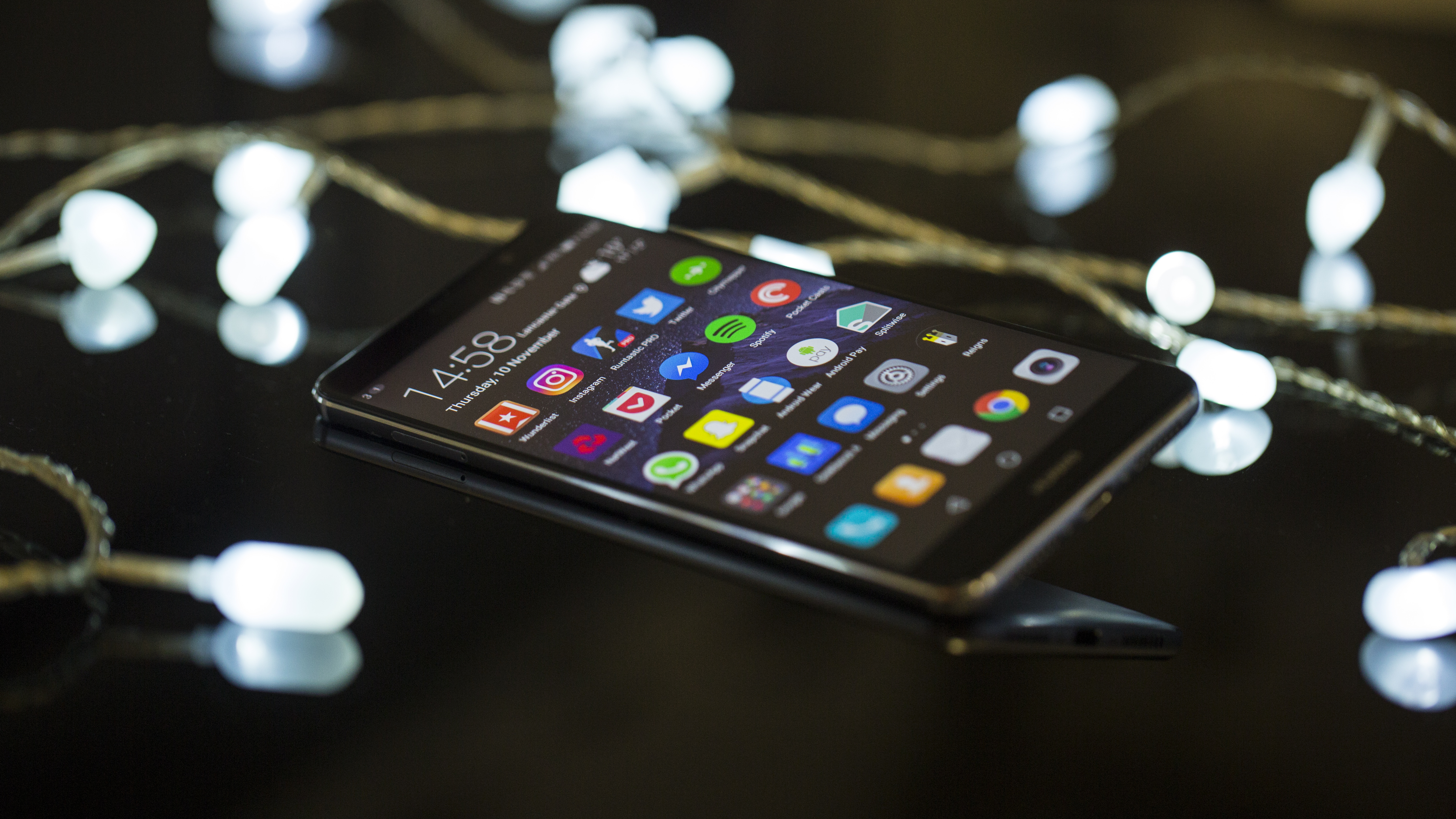
The Huawei Mate 9 is essentially a larger version of the P10, packing a 5.9-inch display and most of the same spec you’ve seen discussed in this review.
It’s slightly more costly than the Huawei P10, but if you’re looking for a larger phone with a big screen, this is a great option for a Huawei device.
- Read our full Huawei Mate 9 review
Huawei P9
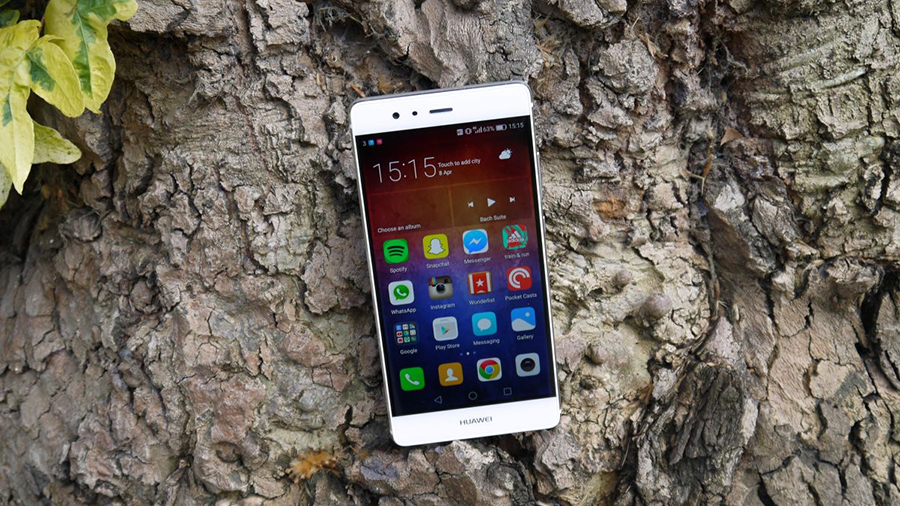
The Huawei P9 is still a great phone, and as we’ve mentioned it even beats the P10 when it comes to its benchmarking scores and low-light photography.
You’ll want to pick this handset up if you’re looking for a Huawei device and want to save a little money. The launch of the P10 has meant the P9’s price has dropped a touch more, making it an even more tempting option.
- Read our full Huawei P9 review
Samsung Galaxy S7 Edge
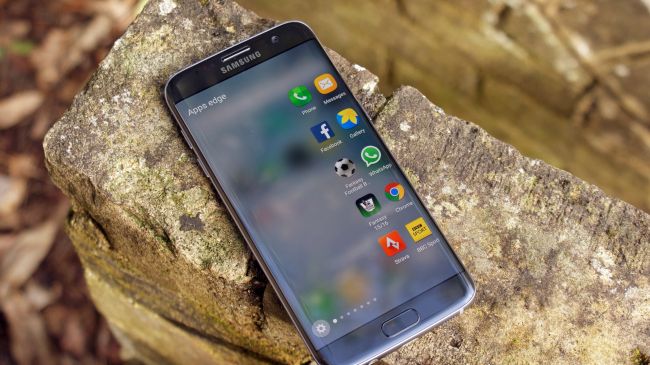
A year after release, the Galaxy S7 Edge is still our favorite phone in the world right now. If you want a phone that can do everything you could ask of it, and which looks great, the Galaxy S7 Edge is the perfect choice.
That said, you may want to wait to see the Samsung Galaxy S8. We expect the Galaxy S8 to launch on 29 March 2017, so it may be worth holding off on your next phone purchase to see if Samsung can get another five star TechRadar review.
- Read our full Samsung Galaxy S7 Edge review plus Galaxy S8 rumors
LG G6

The newly launched LG G6 is one of the best-looking phones we’ve seen, with barely any bezel around its screen and an impressive spec list.
It’s still running last year’s Qualcomm Snapdragon 821 processor though, and it may be quite expensive when it goes on sale. We’ll be reviewing this phone very soon – so again it may be worth holding off you a purchase for a little while.
- Read our full LG G6 hands on review
First reviewed: March 2017